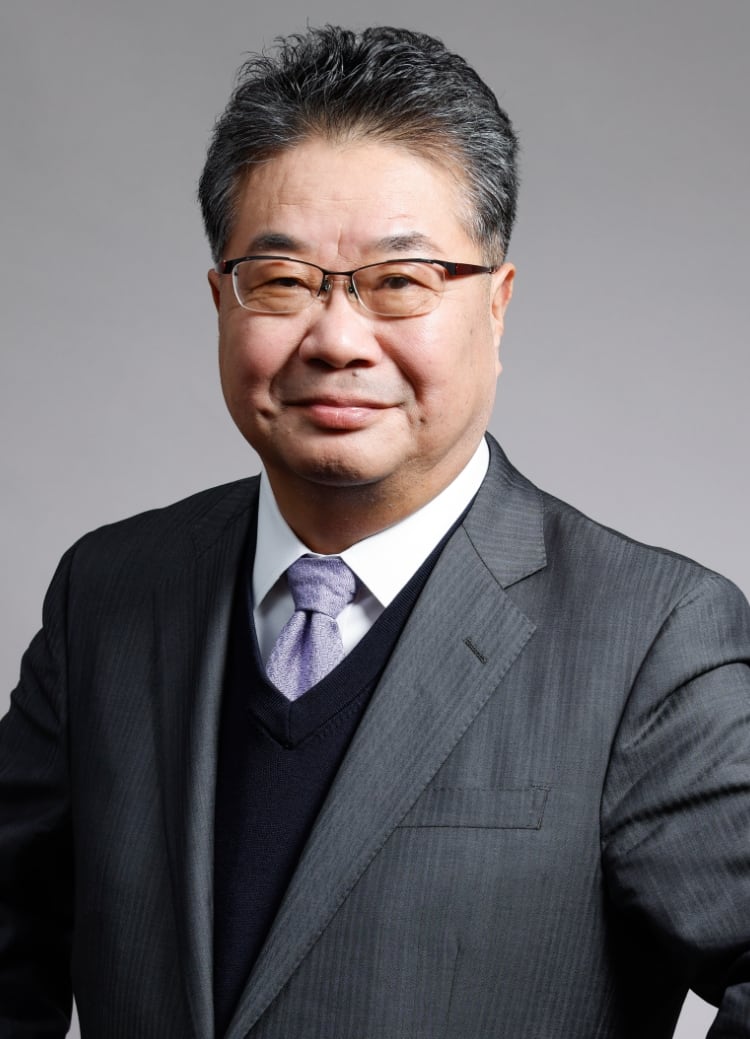
Kazutoshi Mori
Distinguished Professor
Research Fields
Molecular Biology
Cell Biology
Research Overview
Receptor-type transmembrane proteins at the plasma membrane and their ligand-type secretory proteins play critical roles in intercellular communication. These proteins gain their own three-dimensional structure to exert their function with assistance from molecular chaperones and folding enzyme present in the endoplasmic reticulum (ER), the first organelle they encounter after synthesis on ribosomes. Under a variety of physiological and pathological conditions, however, this protein quality control system is compromised, resulting in the occurrence of ER stress characterized by the accumulation of unfolded proteins in the ER. Essentially all eukaryotic cells are equipped with a way to cope with this abnormal situation promptly and adequately, which is termed the unfolded protein response (UPR). This fact tells us the critical importance of protein folding in our cell and body. Dr. Mori has unraveled the mechanism of yeast and mammalian UPR and is analyzing physiological significance of the UPR and its involvement in development and progression of various diseases.
Biography
| 1981 | B.Sc., Kyoto University |
|---|---|
| 1983 | M.Sc., Kyoto University |
| 1987 | Ph.D., Kyoto University |
| 1985-1989 | Assistant Professor, Gifu Pharmaceutical University |
| 1989-1993 | Postdoctoral Fellow, University of Texas Southwestern Medical Center at Dallas |
| 1993-1996 | Deputy Research Manager, HSP Research Institute |
| 1996-1999 | Research Manager, HSP Research Institute |
| 1999-2003 | Associate Professor, Graduate School of Biostudies, Kyoto University |
| 2003-2022 | Professor, Graduate School of Science, Kyoto University |
| 2022-2024 | Professor, Institute for Liberal Arts and Sciences, Kyoto University(Concurrent Peofessor of Graduate School of Science) |
| 2024- | Distinguished Professor of KUIAS |
| 2024-2025 | Deputy Director-General of KUIAS |
Honors
The Wiley Prize in Biomedical Sciences (2005), Osaka Science Prize (2008), Canada Gairdner International Award (2009), Medal with Purple Ribbon (2010), Uehara Prize (2012), Asahi Prize (2014), Albert Lasker Basic Medical Research Award (2014), Shaw Prize in Life Science and Medicine (2014), Thomson Reuters Citation Laureate (2015), Kyoto University Shi-Shi Award (2015), Imperial Prize and Japan Academy Prize (2016), Breakthrough Prize in Life Sciences (2017), Person of Cultural Merit (2018), Momofuku Ando Grand Prize (2018), Keio Medical Science Prize (2023), BBVA Foundation Frontiers of Knowledge Award (2024)
Selected Papers
- A transmembrane protein with a cdc2+/CDC28-related kinase activity is required for signaling from the ER to the nucleus. K. Mori, W. Ma, M.-J. Gething, and J. Sambrook, Cell, 74, 743-756, 1993.
- Mammalian transcription factor ATF6 is synthesized as a transmembrane protein and activated by proteolysis in response to endoplasmic reticulum stress. K. Haze, H. Yoshida, H. Yanagi, T. Yura, and K. Mori, Mol. Biol. Cell, 10, 3787-3799, 1999.
- XBP1 mRNA is induced by ATF6 and spliced by IRE1 in response to ER stress to produce a highly active transcription factor. H. Yoshida, T. Matsui, A. Yamamoto, T. Okada, and K. Mori, Cell, 107, 881-891, 2001.
- Transcriptional induction of mammalian ER quality control proteins is mediated by single or combined action of ATF6α and XBP1. K. Yamamoto, T. Sato, T. Matsui, M. Sato, T. Okada, H. Yoshida, A. Harada and K. Mori, Dev. Cell, 13, 365-376, 2007.
- UPR Transducer BBF2H7 Allows Export of Type II Collagen in a Cargo- and Developmental Stage-Specific Manner. T. Ishikawa, T. Toyama, Y. Nakamura, K. Tamada, H. Shimizu, S. Ninagawa, T. Okada, Y. Kamei, T. Ishikawa-Fujiwara, T. Todo, E. Aoyama, M. Takigawa, A. Harada and K. Mori, J. Cell Biol., 216, 1761-1774, 2017.
